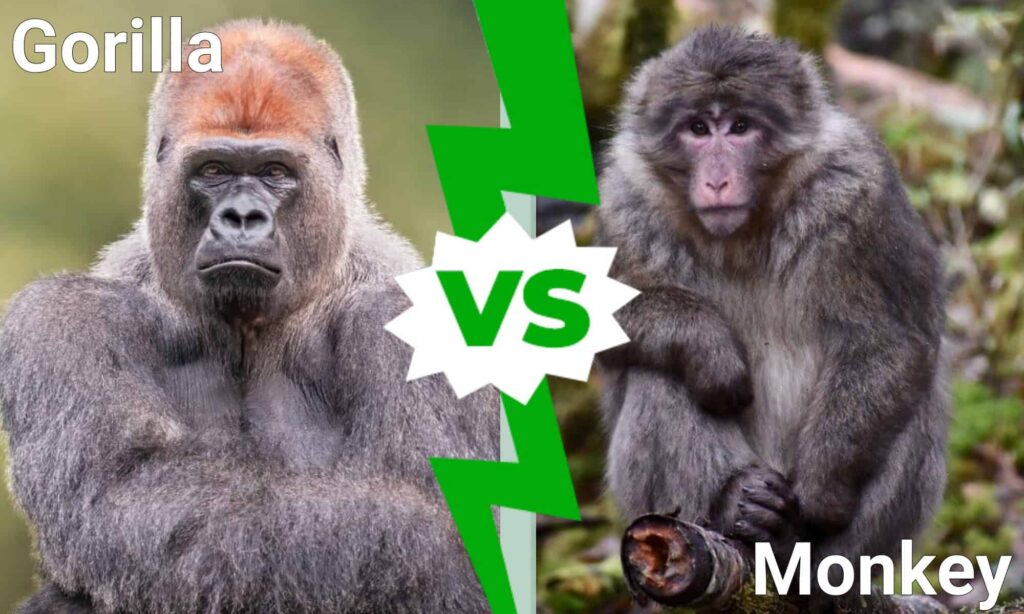Are gorillas monkeys? , Get to Know Today
Gorillas are not classified as monkeys. They are categorized as great apes, which differ from monkeys in several significant aspects. Here is a more comprehensive elucidation of the distinctions:
Classification
Monkeys belong to the primate order, specifically within the infraorder Simiiformes, which include both monkeys and apes. Monkeys are categorized into two primary groups: Old World monkeys (e.g., baboons, macaques) and New World monkeys (e.g., capuchins, spider monkeys).
Conversely, gorillas are classified within the family Hominidae, which encompasses the great apes. This group include orangutans, chimpanzees, bonobos, and humans. Gorillas are closely linked to humans and share a substantial proportion of DNA with us, rendering them far more similar to us than to monkeys.

Physiological Attributes
Monkeys generally possess tails. Although certain species of monkeys, such as apes, possess a tail, it is a defining trait of monkeys overall.
Gorillas, like to other apes, are devoid of tails. This constitutes a significant distinction between monkeys and apes.
Dimensions and Cognition
Monkeys are typically smaller and possess less sophisticated cognitive capacities than apes.
Gorillas are far larger, with adult males (silverbacks) reaching up to 400 pounds or more. Gorillas demonstrate superior intelligence relative to the majority of primates. They are capable of utilizing tools, conveying messages through gestures or sign language, and demonstrating sophisticated problem-solving abilities.
Social Organization and Conduct
Monkeys frequently exhibit more complex hierarchical social structures, with numerous species demonstrating greater agility and adaptation to arboreal living. Certain monkeys, such as baboons, establish extensive groups; nonetheless, their social dynamics markedly differ from those of apes.
Gorillas exhibit strong social behavior but often inhabit smaller groups, usually governed by a dominant male known as the silverback. Their social structure is more stable and exhibits increased nurturing behavior, with the silverback assuming protective and leadership duties.
Genetics
Monkeys and apes share a similar primate ancestor; nevertheless, big apes, such as gorillas, are significantly more closely related to humans than to monkeys. Gorillas possess approximately 98% of their DNA in common with humans, whereas monkeys, including rhesus macaques, exhibit a more remote genetic relationship with humans.
Movement
Monkeys typically traverse their environment by swinging from branches (brachiation) or by ambulating on all fours (quadrupedalism), while other species exhibit adaptations for various modes of locomotion based on their habitat.
Gorillas are predominantly terrestrial and locomote by knuckle-walking on all fours, although they are capable of climbing trees when required. They possess greater strength and robustness than monkeys owing to their larger size.
Final Analysis
Although both gorillas and monkeys belong to the primate order, gorillas are classified as large apes rather than monkeys. The differentiation between them is predicated on variations in anatomy, genetics, cognition, and social organization. Great apes, such as gorillas, exhibit a closer genetic relationship to humans and possess numerous traits that distinguish them from monkeys.
Gorilla expeditions
Gorilla Trekking in Africa provides premier gorilla tracking tours in Uganda, Rwanda, and Congo. Our meticulously designed itineraries will facilitate your visit to and experience with gorillas in their natural habitat. Our most sought-after itineraries comprise the 3-day Uganda gorilla tour, the 3-day Rwanda gorilla safari, the 5-day Uganda gorilla and chimpanzee expedition, the 8-day Uganda primate safari, among others. Reach out to us to arrange your forthcoming gorilla trekking safari.
